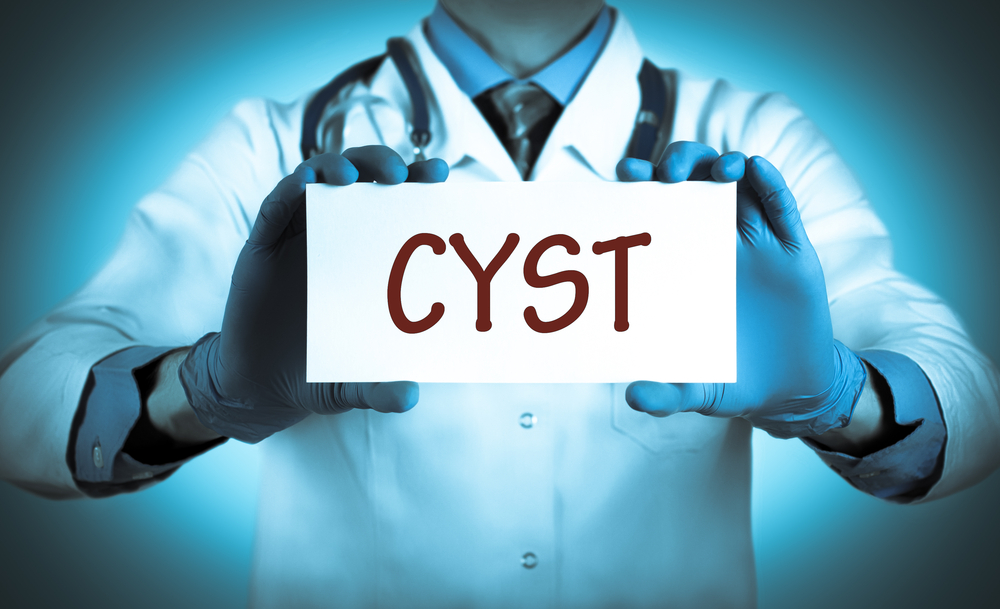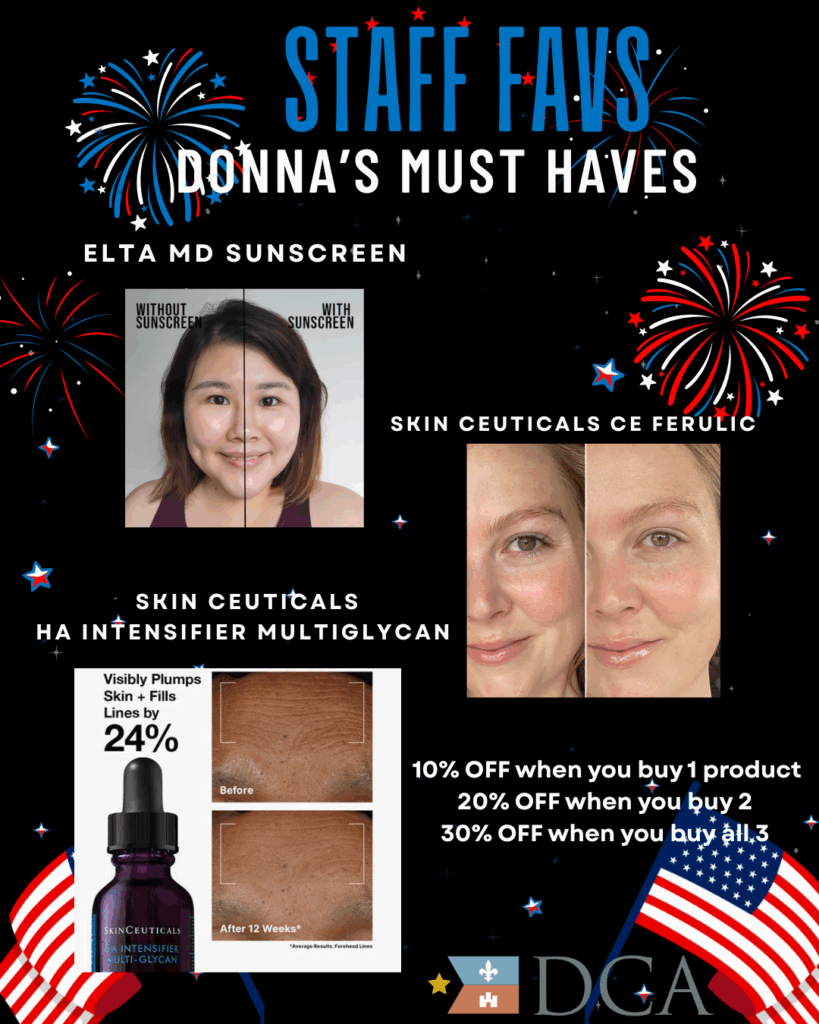At Dermatology Center of Acadiana in Lafayette, LA, your skin health is our top priority. That’s why we offer several options for treating cysts, including cyst removal. Today, we’re looking at how the removal of cysts works, how long it takes, and everything else you need to know about the removal of cysts.
How Long Does Cyst Removal Take?
Cyst removal via excision, the procedure takes no more than 30 minutes. To prepare for the procedure, we will mark the area around the cyst and inject lidocaine into the area to numb it. You may feel a slight pressure as the medication is injected into the area, but you will be unable to feel the procedure.
Once your skin is marked, numbed, and cleaned, we will create an incision around the cyst and pull it out using sterile medical-grade tweezers. Again, you shouldn’t expect the procedure to take longer than 30 minutes, but the exact time of the procedure depends on the size and number of the cysts being removed. As long as the cysts are on the skin, their location does not affect the length of the procedure.
Why Do Cysts Need to Be Removed?
Comfort
Most cysts that occur on the skin need to be removed because, when left untreated, they will become so large that they become uncomfortable. If they become uncomfortable and they are still left untreated, they will eventually become painful.
If the cyst or cysts developed under your eye, they may grow so large that they impede your vision, so operating heavy equipment or machinery, like motor vehicles, can become unsafe.
Safety
Other cysts need to be removed because they are cancerous. While skin cancer is rarely lethal, treatment is still important. There is always a chance that any cancer is or can become lethal, and there is also always a chance that the cancerous cells will spread throughout your body. This can lead to such conditions as brain cancer or lung cancer, which are much more dangerous than skin cancer.
Self-Confidence
The two most common reasons that people seek cyst removal are comfort and safety. They have either waited until their cysts are so large that cause constant pain, or they are in a high-risk category for skin cancer.
However, you don’t need to wait until things get bad to have your cysts removed. If your cysts are affecting your self-confidence, there is no better time than now to have them removed.
How Do I Know if I Have Cysts?
The only way to know for sure if you have cysts is to schedule an appointment with a board-certified dermatologist who can diagnose your condition quickly and accurately. Since there are so many types of cysts, there isn’t a universal set of symptoms that may indicate that you have cysts.
Generally, you may have a cyst if you experience a small bump under your skin that is round or nearly round. There may be a small blackhead near the center of this round bump, and you may experience acute or chronic redness, swelling, or tenderness. Redness, swelling, and tenderness are signs of infection and often accompanied by severe inflammation. Thick, yellow, odorous pus is another common sign.
Where Can Cysts Occur?
Cysts can occur virtually anywhere. In women, cysts are common on the surface of the ovaries, known as ovarian cysts. Men and women also get cysts commonly on the face, usually on the lower eyelids. However, cysts can also occur on your torso and hands. Cysts that develop on the surface of other organs, such as your kidneys or liver, are rare.
What Can I Expect After the Procedure?
What you can expect after your procedure depends on the exact technique used. If it was lanced, the area will not receive stitches. If possible, you should leave the treated area open to the air. If the cyst was excised, stitches will be placed to prevent bleeding. These stitches must be kept clean and dry for 48 hours after the procedure.
How Should I Care for My Skin After My Procedure?
Since cyst removal is such a minimally invasive procedure, there isn’t a lot of aftercare required. However, the few things you need to do are very important. To care for your skin after your procedure, keep it covered with a dry bandage for two days. Keep your gauze in place as instructed after your procedure. Do not remove it even if your skin feels fine.
You must also use antibiotic creams or ointments exactly as prescribed. While your skin is disinfected before treatment and your procedure is performed in a sterile environment with sterile equipment, there is a chance that the treated area will get dirty after your procedure. To further mitigate your risk of a post-op infection, take a full course of oral antibiotics.
Will My Recovery Hurt?
You should not expect to feel pain during your short recovery process. If you feel any discomfort, you are free to take over-the-counter medications as advised by your physician. However, you must take care to not take any pharmaceuticals during the first 72 hours post-op that can thin your blood. For instance, if you get a headache, you can’t take an NSAID, like ibuprofen or aspirin.
If the treated area feels warm, don’t be tempted to apply ice directly to the area. Rather, apply ice near the treated area. For example, if you had a cyst removed from your nose, apply a cold compress to your cheek to ensure you don’t apply too much pressure to the treated area or get your stitches or gauze wet.
How Should I Sleep After My Procedure?
We will advise you on how to sleep post-op during your initial evaluation, and we will remind you of the appropriate position to sleep in after your procedure. If you have a cyst removed from the front of your body, like your stomach, chest, or face, you should sleep on your back. Sleeping on your stomach will put too much pressure on your stitches.
Similarly, if you had a cyst removed from the back of your neck, your back, or your buttocks, you should sleep on your stomach. If you can’t sleep comfortably on your stomach, try sleeping with a pillow under your abdomen to support your spine. If you’re still not comfortable sleeping on your stomach, you can sleep on your side. Just make sure you don’t turn onto your back at night.
When Can I Go to Work After My Procedure?
This depends on the type of cyst that was removed, the technique used, and what you do for a living. If the wound where your cyst was is left open, the area can take weeks or months to heal, and you may need to take two to four weeks off from work. If the treated area was stitched closed, you may only feel the need to take one to three days off from work.
However, if you work a labor-intensive job and the cyst was on your hand or foot, you may need to take a week or two off, even if the wound was stitched shut. Listen to your body, rest when you need to, and be patient. Talk with us about your specific situation.
Am I a Good Candidate for the Procedure?
To determine if you’re a good candidate for this procedure, you need to come in for an initial consultation. There are hundreds of types of cysts, but only some need to be removed rather than treated with medications. If you have a cyst that is most effectively treated with removal, you still need to be healthy enough to undergo the procedure.
For example, you must be healthy enough to stop taking certain pharmaceuticals in the weeks leading up to the procedure that can cause certain side effects, like blood thinning. During your initial consultation, we will provide you with a comprehensive list of things you should do and avoid before treatment. However, preparation isn’t too expensive because local anesthesia is used rather than general anesthesia.
How Can I Prevent Cysts From Recurring?
There is nothing you can do to prevent the formation of most types of cysts. However, there are a few exceptions to the norm. For example, if you have a cyst that has developed around your eyelash line, you can prevent your oil ducts from being blocked in the future by applying a gentle cleanser.
If you have pilonidal cysts, they can be prevented after treatment by keeping your skin clean and dry. After you bathe, pat your skin dry gently with a soft towel rather than rubbing your skin dry aggressively with an old, scratchy towel.
Can’t I Just Pop My Cysts?
If you have cysts on top of your skin, you may feel the temptation to pop them. However, this is the worst thing you can do for the health of your skin. If you pop cysts that aren’t inflamed or infected yet, an infection will most likely occur.
Very rarely do people disinfect the area around popped cysts adequately to prevent an infection. Furthermore, you may find that your surrounding skin is more painful or uncomfortable than it was before you tried to treat your cysts at home.
Effective At-Home Treatments
Unfortunately, no effective at-home cyst treatment exists. Sometimes, cysts will go away on their own. During your initial consultation, we will advise you of whether any treatment is appropriate for your type of cyst. The best thing you can do for your cysts at home is to help them drain naturally by applying a warm compress to the cyst for up to 25 minutes daily.
Alternative Medical Treatments
If cyst removal isn’t right for you, there are several alternatives that may be a better fit for your needs. For example, if fluids or other substances are causing extreme pressure in your cysts, but you’re not a good candidate for removal, then we can drain your cysts in a sterile environment with local anesthesia to keep you comfortable.
To treat certain types of cysts, like cysts caused by acne, we can administer corticosteroid injections to stop inflammation in its tracks. Furthermore, we will administer a medication to treat the root cause of the cyst so it will disappear without any further intervention.
Learn More About Removing Your Cysts Today
Have you been diagnosed with a cyst? Do you want to have it removed? Removing your cysts is quick, pain-free and will improve your self-confidence and skin health instantly. To learn more about cyst removal, call our experts at Dermatology Center of Acadiana in Lafayette, LA today to book an appointment. We will quickly and accurately diagnose your skin concerns to determine the best course of action for your skin health, overall health, and aesthetic.

